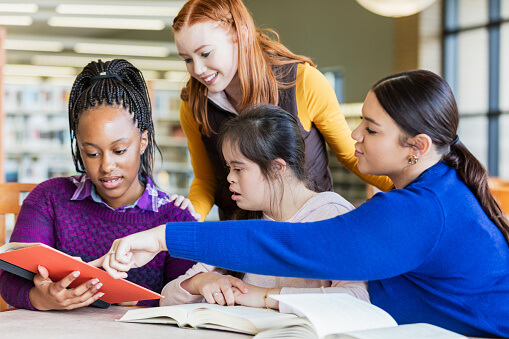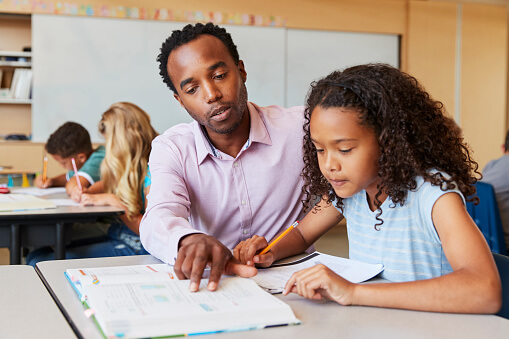
General Characteristics of Twice Exceptional Learners
Common characteristics of 2E students.
Students who are gifted may also have a special need or disability. The term “twice-exceptional,” also referred to as “2E,” is used to describe gifted children who have the characteristics of gifted students with the potential for high achievement and give evidence of one or more disabilities as defined by federal or state eligibility criteria. These disabilities may include specific learning disabilities (SpLD), speech and language disorders, emotional/behavioral disorders, physical disabilities, autism spectrum, or other impairments such as attention deficit hyperactivity disorder (ADHD).
A “twice-exceptional learner (also known as 2E)” is a child or youth who performs at—or shows the potential for performing at—a remarkably high level of accomplishment when compared to others of the same age, experience, or environment and who:
…and who also gives evidence of one or more disabilities as defined by federal or state eligibility (IDEA, 2004) (300.8) (Section 504) criteria such as:
Twice-exceptional learners do not form a simple, homogeneous group; they are a highly diverse group of learners. The contrast between their strengths and challenges may result in negative perceptions by adults, peers, and self.
Twice-exceptional learners do not easily fit into gifted education or special education programs. They are not always viewed as belonging in G/T education, but they possess many of the traditionally identified characteristics of gifted learners. They are not always viewed as belonging in special education, but they have some of the characteristics of students with disabilities. At times, their disabilities may mask their ability to be traditional producers.
The characteristics discussed should be viewed as those that are typical of many learners who are gifted and who also have a disability, rather than characteristics that all such learners possess.

Common characteristics of 2E students.

Students who are twice-exceptional may exhibit behaviors that may mask their needs for G/T services.

Guidebook including information about the characteristics and needs of twice-exceptional learners.

Position paper on twice-exceptionality from the National Association for Gifted Children (NAGC).

The largest organization representing gifted learners.

Website containing links to books for gifted children on the various aspects of being gifted.
There is no general profile of a twice-exceptional leaner. All twice-exceptional learners are gifted learners. However, these children’s giftedness interplays with one or more disability. Often twice-exceptional learners’ disabilities exist in combinations (e.g, learning disability combined with sensory integration dysfunction or autism combined with obsessive compulsive disorder). An understanding of the characteristics of twice-exceptional learners requires an exploration of giftedness and of the various disabilities.
Autism is a developmental disability significantly affecting verbal and nonverbal communication and social interaction, generally evident before age three, that adversely affects a child’s educational performance. Other characteristics often associated with autism are resistance to environmental change or change in daily routines, and unusual responses to sensory experiences.
Specific learning disability means a disorder in one or more of the basic psychological processes involved in understanding or in using language, spoken or written, that may manifest itself in the imperfect ability to listen, think, speak, read, write, spell, or to do mathematical calculations, including conditions such as perceptual disabilities, brain injury, minimal brain dysfunction, dyslexia, and developmental aphasia.
A medically defined disorder characterized by a persistent pattern of inattention and/or hyperactivity.
It involves an inability to direct and/or control attention due to an under-focus on all stimuli (hypo-focused).
A medically defined disorder characterized by a persistent pattern of inattention and/or hyperactivity.
It involves an inability to direct and/or control attention due to an over-focus on all stimuli (hyper-focused).
A condition exhibiting one or more of the following characteristics over a long period of time and to a marked degree that adversely affects a child's educational performance:
Speech or language impairment means a communication disorder, such as stuttering, impaired articulation, a language impairment, or a voice impairment, that adversely affects a child’s educational performance.
The characteristics of speech or language impairments will vary depending upon the type of impairment involved. There may also be a combination of several problems. The types of impairments include:
Traumatic brain injury means an acquired injury to the brain caused by an external physical force, resulting in total or partial functional disability or psychosocial impairment, or both, that adversely affects a child's educational performance. Traumatic brain injury applies to open or closed head injuries resulting in impairments in one or more areas, such as cognition; language; memory; attention; reasoning; abstract thinking; judgment; problem-solving; sensory, perceptual, and motor abilities; psychosocial behavior; physical functions; information processing; and speech. Traumatic brain injury does not apply to brain injuries that are congenital or degenerative or to brain injuries induced by birth trauma.
Children who sustain TBI may experience a complex array of problems, including the following:
Families play a critical role in the lives of their twice-exceptional children. School can be very challenging for twice-exceptional children and they need a home environment that is accepting and supportive. Above all, do not let the problems of school destroy family relationships. Focus on helping your child to develop his/her potential rather than trying to fix them. Click on the following links for more information:
This activity will create opportunities to have conversations with your child on how they perceive themselves and could be the spark to create better self efficacy. Twice-exceptional learners are sometimes viewed as:
In reality, these students are dealing with the clash between asynchronous cognitive and affective development. This activity shows what these behaviors could mean from students’ perspectives, what supports they might need from you, and what inappropriate self perceptions children may have. This can be an excellent opportunity to learn more about what makes your child unique and help them be more aware of the strengths that they bring to the world around them.
It can be extremely difficult to advocate for twice-exceptional learners. Do not become involved in the blame game; instead, work collaboratively with the school using a problem solving approach.
I believe my child may be twice-exceptional — What should I do?
My child is experiencing problems in school, not performing at a level equal to his/her potential, and/or does not want to go to school — What should I do?
Parents of twice-exceptional students have witnessed the frustration their children experience when trying to complete homework assignments. Supporting your child is very important; however, do not take on the responsibility for doing the work. You can support your child in in the following ways:



TEA guidance on how to interpret the State Plan for the Education of G/T students.

Districts have a variety of models to provide G/T services. It is important to note that Districts may offer one or more of these options. It is important to be familiar with your rights and know the expectations of the modes of delivery. Your child will be provided their services for acceleration and enrichment through these models. Take a look at the following district approved service options and questions that you are able to ask to advocate for your child.